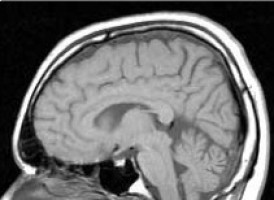
A new study led by Massachusetts General Hospital (MGH) investigators finds that radiation therapy may increase the uptake of therapeutic nanoparticles by glioblastomas, raising the possibility of using both growth-factor-targeted and immune-system-based therapies against the deadly brain tumour.
The team describes how pretreatment with low-dose radiation increased delivery to tumours of nanoparticles carrying small interfering RNA (siRNA) molecules and significantly improved survival in a mouse model of glioblastoma.
"We found that radiation therapy primes brain tumours for enhanced uptake of nanotherapeutics, allowing us to develop a targeted nanoparticle to deliver siRNAs for both immune checkpoint and targeted therapy against the most aggressive type of brain tumour," says Bakhos Tannous, PhD, of the Neuro-Oncology Division in the MGH Department of Neurology, senior author of the report published in ACS Nano.
"A brief burst of radiation was able to increase uptake of the nanoparticle up to five-fold, enhancing the effects of targeted therapy, activating the immune response at the tumour site and prolonging survival."
While up to 60 percent of glioblastomas express the EGFR growth factor, a molecule used in targeted therapies against several types of cancer, EGFR-targeted therapies have had little success against the brain tumours.
Similarly immunotherapies directed against immune checkpoints such as CTLA-4 and PD-L1 have promising results against many cancers but not yet against glioblastoma.
Some studies have suggested an association between EGFR activation and increased PD-L1 expression, raising the possibility that targeted both could increase the antitumour effects.
In order to deliver siRNAs targeting both EGFR and PD-L1 to brain tumours, the researchers developed a solid lipid nanoparticle guided by a tumour-targeting peptide called iRGD, which binds to a molecule present on blood vessels lining the tumour, allowing it to penetrate both the blood-brain and blood-tumour barriers.
Factors such as the small size and positive charge of this nanoparticle allow it to penetrate the blood-brain barrier; and like other solid lipid nanoparticles, its low cost, stability, biodegradability and ease of manufacture make it an attractive option, explains Gulsah Erel-Akba, PhD, of MGH Neuro-Oncology and Izmir Katip Celebi University in Turkey, the first author of the study.
In order to test whether pretreatment with low-dose radiation therapy would increase the therapeutic effectiveness of the nanoparticle, the investigators compared the results of four strategies in glioma-bearing mice:
Examination of tissue from the tumour sites found that the combined therapy decreased expression of PD-L1 and increased recruitment of CD8 T cells, indicating an increased antitumour immune response.
An associate professor of Neurology at Harvard Medical School, Tannous explains that radiation is known to counteract the immunosuppressive glioblastoma microenvironment in several ways, suggesting a dual action of both increasing nanoparticle delivery and enhancing the antitumour immune response.
While aspects such as the optimum dose and timing of radiation pretreatment have yet to be determined, he notes, the same approach could be used to treat other aggressive tumours with siRNAs targeting different molecular pathways.
Source: Massachusetts General Hospital
We are an independent charity and are not backed by a large company or society. We raise every penny ourselves to improve the standards of cancer care through education. You can help us continue our work to address inequalities in cancer care by making a donation.
Any donation, however small, contributes directly towards the costs of creating and sharing free oncology education.
Together we can get better outcomes for patients by tackling global inequalities in access to the results of cancer research.
Thank you for your support.